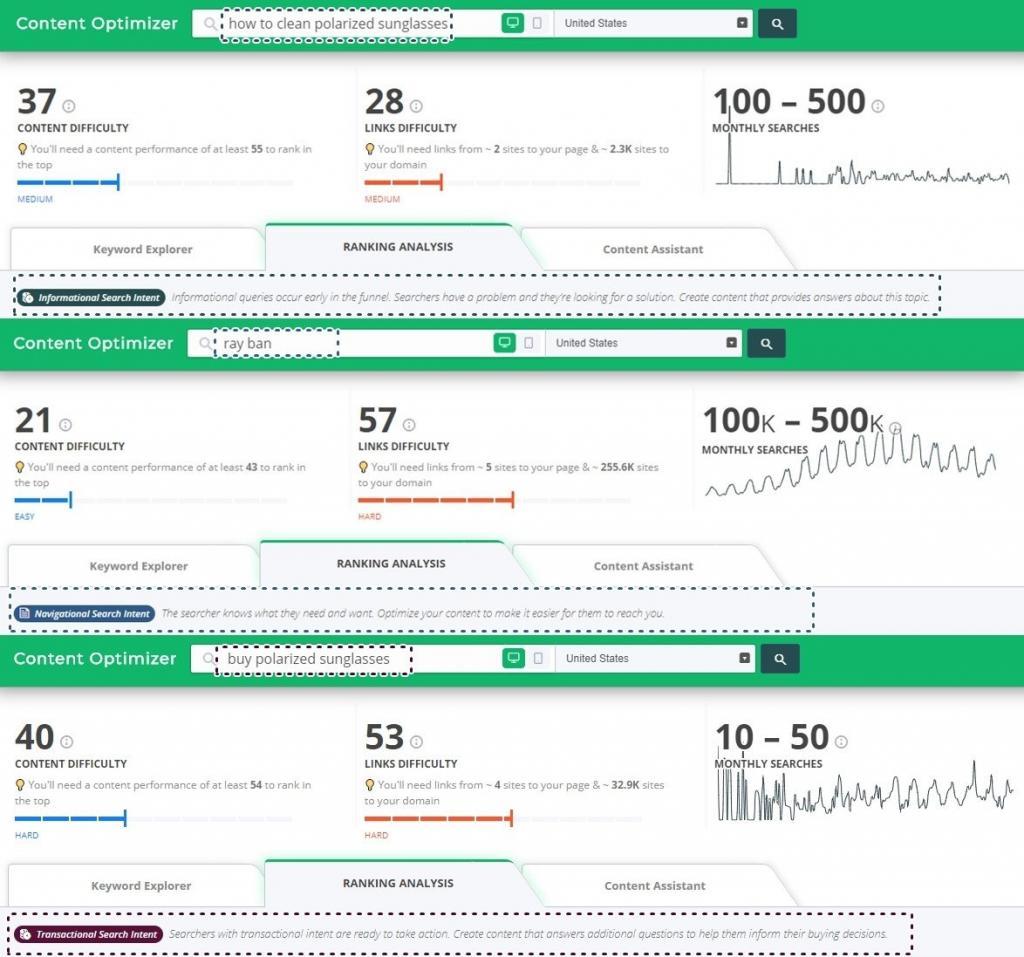The Unique SEO Content Strategy to Rank #1 with Zero Links
We keep hearing that content is king. Write great content, content here, content there. But how true is that statement? Is there such a thing as an SEO Content Strategy that you can use to rank #1 with zero backlinks?
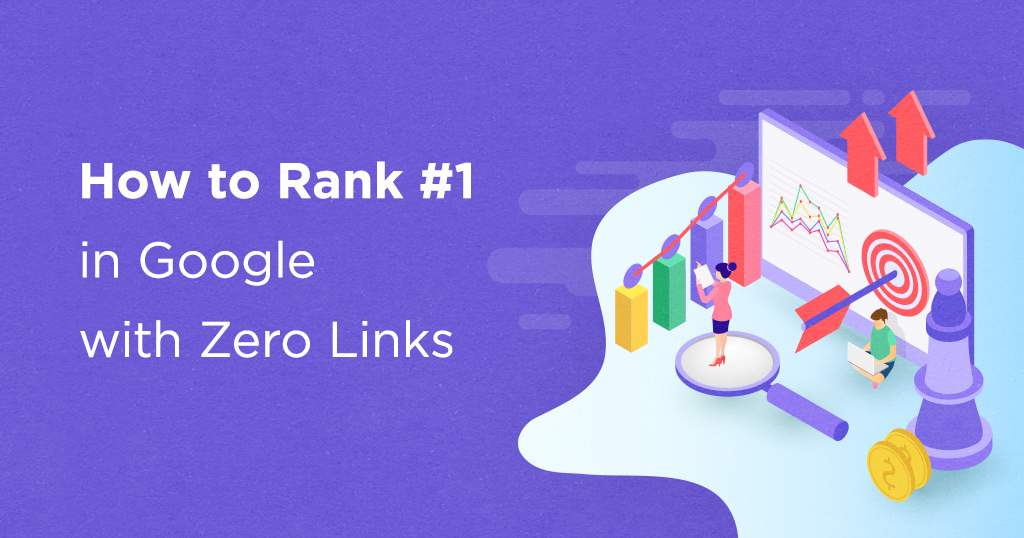
Like most answers in SEO, this one is also ‘it depends’.
Keep reading and I’ll explain exactly why.
While you might not be able to get to position one without any backlinks for a highly competitive keyword, you’ll definitely be able to increase your rankings in Google just by optimizing your content and having in place a great SEO content strategy.
By the end of this blog post, you’ll have a better understanding of how Google treats links and content and you’ll get the SEO Content Strategy that might help rank #1 on Google with zero backlinks.
- Can I Really Rank #1 with Zero Links?
- Why Is Google Pushing More Weight to the Content Ranking Factor?
- Step-by-step SEO Content Strategy to Rank #1 with Zero Links
- Identify Your Primary Audience and Their Pain Points
- Perform an In-depth Keyword Research & Audit
- Make a List of the Keywords You Can Realistically Dominate
- Analyze the Search Intent of Your Keywords
- Optimize Landing Pages / Per Keyword & Per Search Intent
- Write Content That Stands Out and Is Share Worthy
- Launch & Share Your Content with Key Influencers
- Monitor How Your Content Is Performing
- Update Your Content Once in a While
- Conclusion
1. Can I Really Rank #1 with Zero Links?
Not long ago we performed a lot of searches for pharma, gambling and skincare keywords, in a nutshell on highly competitive keywords and niches.
Our bet was to figure out if there are pages within these niches ranking based on high quality content only.
As you can see in the screenshot below taken from cognitiveSEO’s Content Optimizer, you can see that there are many pages with no or just a few links but highly optimized content, that rank really well.
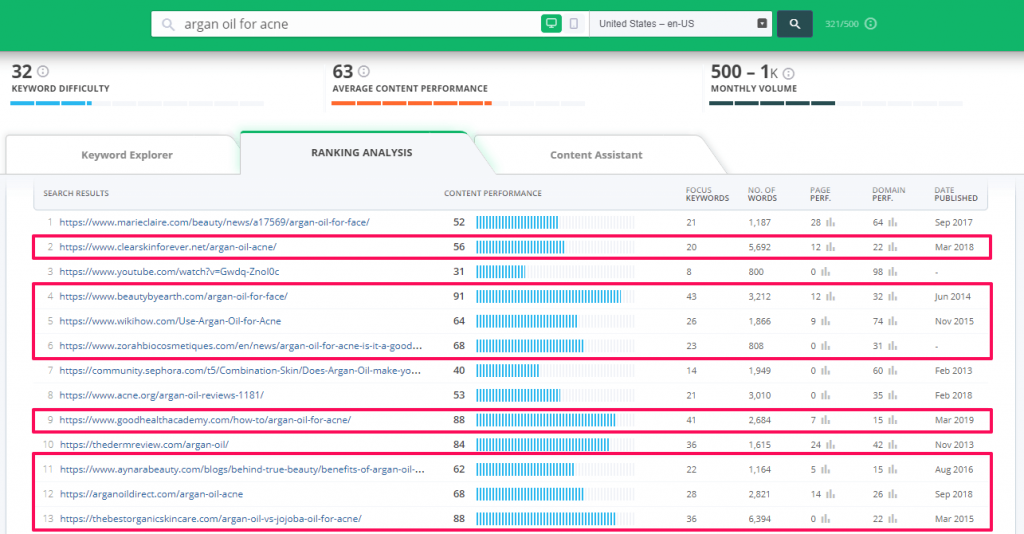
Of course, we cannot answer to this question with a simple yes or no, yet, with Google giving so much weight to content lately, we might say that a good SEO content strategy can help you out big time.
Of course, it depends based on what you mean by rankings and it depends on what you mean by links.
For example, someone might claim they rank without any links, but what are they ranking for?
Are they ranking for a high competition, high search volume keyword, or a long tail, low competition and low search volume one?
Some time ago, Steven Kang started a contest in the SEO Signals Facebook Group, with a prize pool of $1000, to whoever could find or pinpoint a website that ranked #1 on Google with no backlinks.
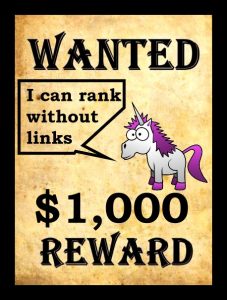
However, the rules for this contest were very specific:
- There can be no external backlinks present. Any single external backlink to the domain discovered will disqualify the site.
- The site can have internal links since some claim internal linking shouldn’t count for such claim.
- The site must be written in English.
One year after, the contest is still available. Nobody has won it yet.
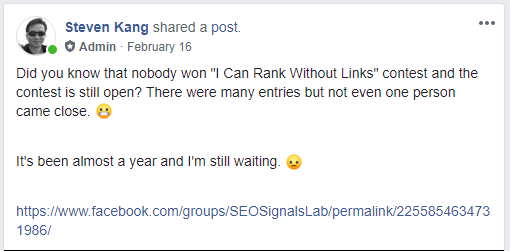
By the looks of it… it seems that it’s difficult to rank on Google without backlinks.
However, in one case a website was eliminated and it had backlinks only from Social Media platforms such as Facebook, Twitter and Pinterest.

While those are indeed backlinks, almost every website has them and they don’t pass as much value as a contextual link from a high quality, relevant website.
Other contestants have said that the contest is not fair, as they did not buy or build the links, but they simply came naturally, just as Google wants.
However… they’re still links, aren’t they?
The contest therefore excludes all links, not only purchased, built or bought ones. Considering this, Social Media is also excluded and probably any other form of online promotion.
So when it comes to ranking with zero links… Are you talking about links to that specific web page, or links to the entire domain?
Are you talking about a made-up keyword with no search volume whatsoever, or about a profitable, competitive, highly searched for keyword with a great market value?
If you’re trying to rank for a very competitive keyword, where the top-ranking domains have thousands of backlinks pointing to them… tough luck!
The truth is that beside a solid SEO content strategy, links still matter and if your competition is building, buying or obtaining backlinks naturally, you’ll have a difficult time ranking #1 with zero backlinks.
But if the competition doesn’t have many backlinks either, it is possible to outrank them, even without links, in some cases.
There are many examples of websites which outrank their competition with fewer backlinks.
For example, we’re outranking Moz for the keyword “does meta description affect seo” although we only have 23 referring domains, while Moz’s page has over 1500.
For another similar phrase, “does meta description matter”, another website is ranking very well, with only 1 referring domain.
However, in both cases the results are an answer box. If you remember, some time ago you could have the answer box position and another spot.
Luckily, when Google changed this and only let you keep one or the other, they let us have the answer box.

These are pretty specific keywords and for the most competitive phrase, “meta description”, Moz still dominates the top spot.
Ranking with just a few backlinks to a web page is possible, if you have the right content.
But it’s probably necessary to have at least some backlinks pointing to your domain.
The internet doesn’t really work well without links. Search engines use links to crawl the entire web.
It’s also true that without any backlinks pointing to your domain, Google will have a hard time crawling and indexing your site.
However, keep in mind that backlinks on their own won’t do very much if the content doesn’t satisfy the users. They can even do harm.
After the Penguin updates, it was pretty clear Google was set to fight back against link spam.
Maybe the top spot isn’t achievable with absolutely zero links, but you don’t need the top spot to increase your search traffic.
You can greatly improve rankings in Google simply by optimizing your content even for competitive, high search volume keywords.
Many other SEOs and content marketers have improved their rankings following this OnPage SEO technique.
If you stick around, I’ll show you exactly how you can do it, too.
But first, let’s see why Google is pushing away from backlinks and more towards content.
2. Why Is Google Pushing More Weight to the Content Ranking Factor?
Back in 2017, during our numerous tests, we found a big correlation between the Content Performance score we had developed and rankings.
We repeated the test after 2 years, in 2019 and it seemed that content is even more important now.
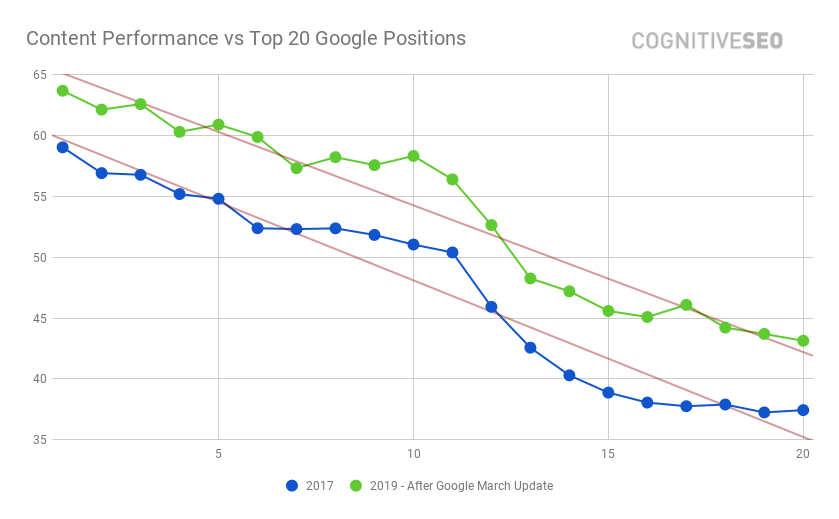
The algorithm we use is complex, using a mix of AI technologies and things such as LSI and Flesch–Kincaid to determine what makes a piece of content rank high.
Attempts to remove backlinks from the algorithms have been made before.
Why? Mostly because of spam. As long as backlinks are a ranking signal, people will try to abuse them.
In 2013, Yandex, the Russian search engine, removed backlinks from their algorithm in an attempt to stop link spam.
Although it only took effect in the Moscow local search results and only for commercial queries, the change was short lived, as they brought links back only a year after.
Officials at Yandex stated that the change was “quite successful technologically”, but people still bought links and spammed the web regardless, so they decided to bring them back.
However, they brought them back with a substantial change: The links would not only be a positive ranking signal, but also a negative one, just like with Google’s Penguin update.
Could it be that the officials at Yandex are not willing to admit their failure? Maybe, who knows.
But if it was a success, couldn’t they just use spammy links as a negative signal only? Without using other links as a positive one?
Google has also tested rankings without backlinks in their algorithm.
However, they came to the conclusion that the results look much better when backlinks are a ranking signal.
Unfortunately, there are other issues with backlinks other than buying them.
Take a look at Negative SEO, for example. Google claims they can spot and ignore these types of links with Penguin 4.0, but is it really possible?
I’m not convinced. I’ve seen many cases in which websites have a drop in traffic immediately after an unnatural spike in backlinks clearly built by others.
You’d think that people engaging in Negative SEO will try to mimic link building… but that might also result in positive results for the target.
So, these attacks are usually very obvious. Pure spam. And Google still penalized the site.
So, it’s obvious they have a hard time dealing with all this link trading and spam.
This, combined with the constant effort from SEOs to obtain backlinks in unnatural ways, has pushed Google into wanting to back away from backlinks.
Backlinks are something you don’t have much control over. Yet, an SEO content strategy you can control.
With algorithm updates such as Penguin (which penalizes spammy links) and Panda (which penalizes spammy content), Google shows us it’s putting more weight on content.
But although search engines don’t like them, it seems like links are still going to stick around for a while, as Matt Cutts states in the video above.
However, with AI software that can also write content like humans getting better and better every day…
It’s hard to tell where this will go.
We might have the same issue as with links, with AI written websites constantly trying to compete to the top.
It would be a battle of the algorithms… one in which users won’t have a say.
We could bring the law into the equation, but that would spark a whole new lot of bigger and more complex issues.
However, I could see how in the future, the law would require you to specify that the content is written by a robot and not by a human.
While AI written content can be used for good, it can also be used for harm, from the relatively harmless blackhat SEOs to the highly harmful fake news outlets.
We’ve known for a long time that content was an important ranking factor, but now we also wanted to know why.
Google was moving away from backlinks (our tool and marketing strategy was mostly built around backlinks) so investing in this was in our own interest.
So let’s take a look at how exactly you can improve your rankings in Google without any link building, only by optimizing your content.
3. The Step-by-Step SEO Content Strategy to Rank #1 with No Links
OK. Now you know that it’s possible to rank without links in some situations and also why Google puts more and more weight on the content side of SEO.
You also know that backlinks are something you don’t have complete control over.
But how exactly do you rank without links? What step-by-step SEO content strategy can you apply to succeed?
Here are the steps you need to follow to have a chance on ranking without links.
3.1. Identify your Primary Audience and Their Pain Points
The first think you should do before writing anything is identifying your target audience.
You can start with what’s top of mind and build from there.
Who would be interested in your content and how can you make your content appeal to them?
Who are your clients? How old are they? Who are their friends? Where do they hang? How do they talk?
It’s easier to do this when you already have some clients or readers. Just look at your best clients and readers so far.
Who’s buying from you? Who’s reviewing on products? Who’s commenting on your blog and social media profiles?
If you’re just starting out and have no idea… then consider doing a market research.
I know it sounds complex, but you can start by simply creating a Google Form and sharing it on a couple of Facebook Groups, asking for help.
Sure, it’s not much, but it’s better than nothing.

Don’t focus on features with your product but on benefits. Don’t think in terms of needs but in terms of wants. Want is stronger than need.
And don’t seek answers from your research but feelings and emotions which you can then use to convince them to buy.
That’s what you want to ultimately address and that’s what will get you sales / engagement.
This step is probably more useful for products and commercial keywords and less for informational queries.
However, you can still address things such as the tone of voice for your audience.
You can also try to create a persona of your ideal customer / reader and try to write as if you were speaking directly to that person.
3.2. Perform an In-depth Keyword Research & Audit
The really important step when trying to optimize content is always keyword research.
What are you targeting now?
You can use the Google Search Console to easily determine the keyword you’re already ranking for.

Can you improve this existing content? Or should you target new keywords? These are questions you should ask yourself when putting together your SEO content strategy.
You can also use the CognitiveSEO Keyword Explorer to identify new topics you can target.
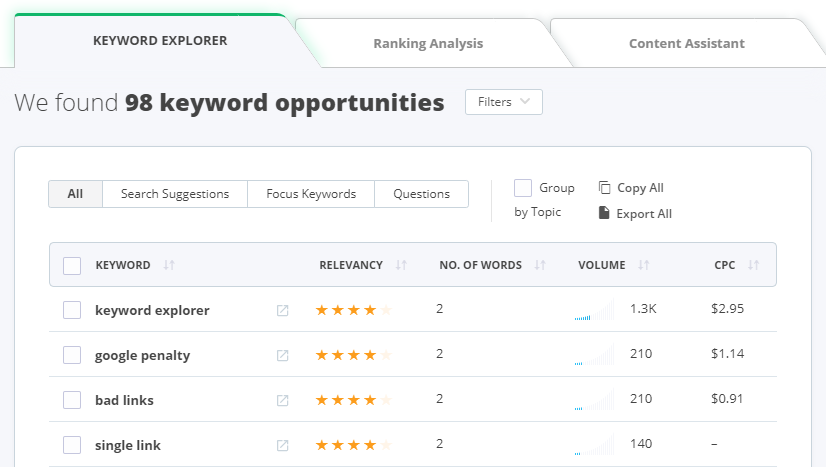
Once you’re done, map out these keywords into an excel file and sort them out by relevance and importance.
3.3. Make a List of the Keywords You Can Realistically Dominate
Now comes the more difficult part.
For which of those keywords can you realistically rank better?
After you’ve determined a list of keywords you’ll go after, you have to take a look at two things:
Content Performance and Domain Performance.
You can use the Ranking Analysis section of the Content Optimizer Tool.
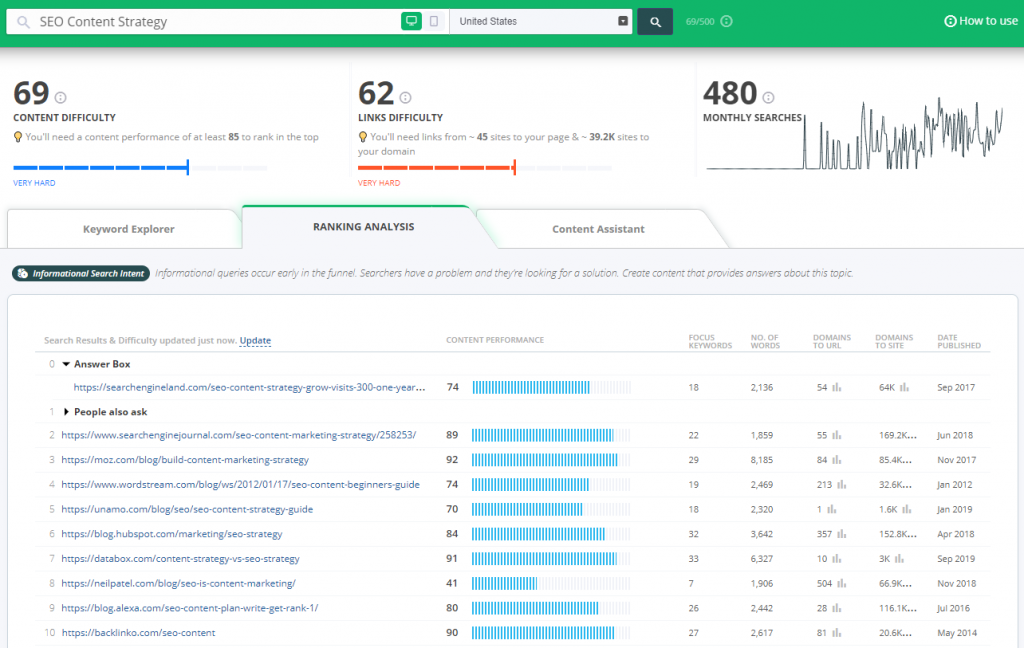
While the Content Performance is something that we have control over and will improve in a future step, backlinks aren’t something we have that much control over.
So you want to see websites with as few referring domains as possible compared to your site (which you can check with the Site Explorer).
Of course, if you see a lower content score and/or word count, those are also good indicators that it will be easier to improve your content.
3.4. Analyze the Search Intent of Your Keywords
Search intent and user experience are very important. It’s the key metric in 2020 and onward.
If you don’t match the search intent well, users will have a bad experience on your website.
One of the best examples of search intent is transactional vs. informational.
Given the keyword “men’s running shoes”, eCommerce websites will tend to rank better.
However, for a keyword such as “best running shoes for men”, reviews and buyer’s guides will tend to rank better.

People are simply looking for different types of content on each of those keywords.
What you ultimately want to figure out is what your user is looking for when searching for a particular query and accessing your website.
For this blog post I know that there are two possible intents that are very closely related to one another: “can you rank with zero backlinks” & “how to do it”. My article simply appeals to those needs.
Knowing my audience in general, I know that I want to provide proof for the first group, and step-by-step tutorials for the second.
A good way of analyzing search intent is to look at what’s already ranking well.
You know they’re already doing something well, since they’re ranking.
If you can spot some gaps you can fill, such as questions asked in the comments that remain unanswered in the content itself, that’s even better.
Did you know?
The Content Optimizer & Keyword Tool from cognitiveSEO automatically classifies the search intent for you.
You just need to type in the keyword you are interested in optimizing for, and the tool does most of the job for you. The tool performs keyword research, it will tell you what is the user search intent, how popular is that keyword, how difficult it is to rank on it, and cream of the crop: what it takes to rank on that keyword, meaning, what are the exact keywords and links that boosted that page in the top of the search results.
3.5. Optimize Landing Pages / Per Keyword & Per Search Intent
On with the actual optimization. Don’t worry, it’s probably the easiest step.
First, consider that it’s always best to consider landing page optimization for a single main keyword and a single search intent per page.
You can sometimes combine very similar keywords, but try as much as possible to stick to the same search intent.
Remember, if the search engine results are similar for these keywords, they probably have a similar search intent as well.
You should keep in mind that writing naturally is the best way to go.
Open the Content Assistant section and hit Start Optimizing.
It’s easier to work on something you’ve already written, but you can also start from scratch. However, you’ll have to write at least a title for the tool to work.
You can also import a URL if your content is already live.
Then, just click Check Score, the tool will analyze your content, tell you the score and recommend you some keyword ideas.

The idea is to add those keywords into your blog post. However, don’t just throw them in, or else you’ll end up with a Keyword Stuffing warning.
The keywords with dots on their left are the most important ones. You should be using them multiple times throughout your content.
The idea is to think of these keywords as subtopics or areas of interest that you should cover in your content.
If a keyword that the tool recommends doesn’t seem to fit or has grammar mistakes in it, don’t force it in.
You don’t need a 100% score. The tool will pinpoint how much you need to reach.
However, you can also try doing it in phases. First, optimize for a few points above the average, then update your content after a few weeks to the recommended score.
3.6. Write Content That Stands Out and Is Share Worthy
A great way to do this is to write content about complex questions that are very often asked in your industry, or case studies.
For example, this article about meta descriptions affect SEO or not has been linked to multiple times by other SEO blogs trying to make a quick point without getting into too much detail.
Also, make sure you have great Titles, Headlines and Descriptions.
Optimize your titles with keywords for SEO, but also keep them catchy for Social Media.
You can use the Open Graph property to set different titles for SEO and Social Media
Long content tends to perform better in organic search results.
When people search for something, you already know they are interested in it. That’s why SEM has such a high conversion rate and people spend time reading in depth articles.
You can look at the top ranking search results for your keyword in the Ranking Analysis section of our Content Optimizer Tool.

For this particular keyword, you can see that the top ranking content is between 2500 and 5000 words on average, although we can even see articles with only 1800 words in top 10.
Usually, it’s a good idea to go for at least the top 10 average plus a few hundred words, just to be sure. But it’s not really about quantity, it’s about quality.
However, you’ll probably not be able to fit all the depth required for this particular topic in just 200 words, at least compared to the competitors.
Nevertheless, take this content length thing with a grain of salt. While long form content performs better in search, shorter content might perform better on social media.
On Social Media, people are browsing different things and not really looking for a particular topic, so they might prefer things straight and to the point.
3.7. Launch & Share Your Content with Key Influencers
Once you’ve written and published your content, it’s time to promote it. This should be an important part of your SEO content strategy.
We made a study a few years ago on weather social signals influence rankings and it seems that a strong presence on social networks is correlated with better rankings.
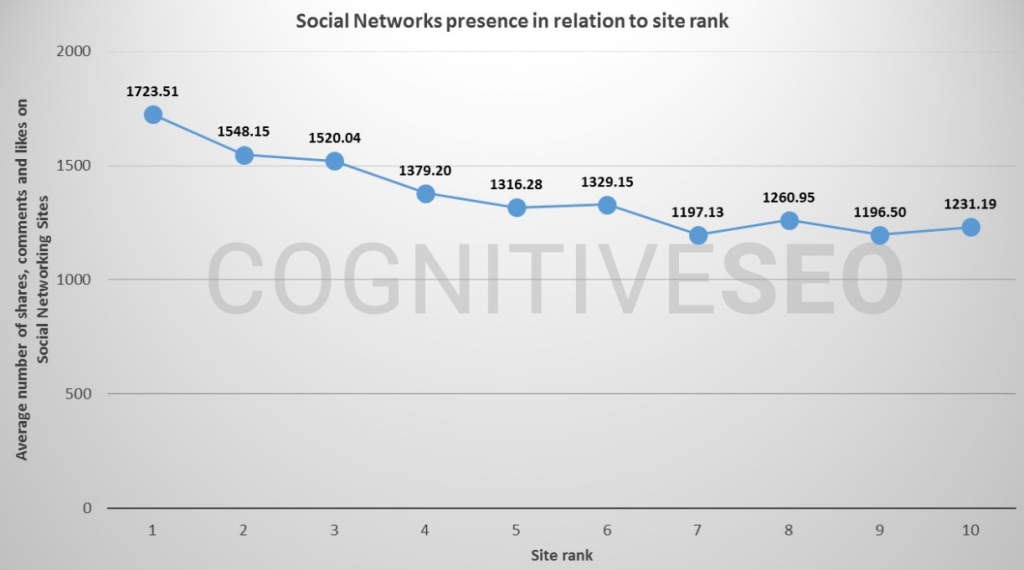
Once you have your content live, it’s time to share it with the appropriate influencers.
Who are these influencers? Well, people who have a following which matches your target audience.
If they don’t hear about your content… they can’t share it or talk about it.
It’s also a good idea that the influencers themselves are interested or resonate in the topic and the way you present it.
One of the even more advanced SEO strategies is to plan your content ahead.
And by this I don’t mean having an editorial calendar, but actually targeting influencers beforehand, analyzing them and writing something that you already know they will be willing to share.
You’ll have to be persuasive and it’s also a good idea to build trust with them beforehand, by sharing their content and commenting on it or engaging with them.
I know it sounds evil and manipulative and you can be if your sole interest is only to get what you want, but being genuine and truly offering value in exchange usually works best.
I can recall the easiest response I have ever got. It was from a person named Reiner, which reminded me of a character in the anime show Attack on Titan.

Luckily, he did see the anime, so we how now had a personal connection and he was willing to give me a hand.

Another easy-to-implement technique is to ask for quotes from experts in your industry or take interviews.
Two examples are my article about SEO mistakes and my colleague Andreea’s article about SEO tips from 22 experts.
While we offered a lot of value, it’s true that we also used the guests’ reputation to leverage our content’s reach.
Of course, it’s not guaranteed to work, but most of them will gladly share the content on their social profiles or blogs.
To find influencers, you can use a tool such as Brand Mentions.
You can spy on your competitors and see which influencers have mentioned their content.
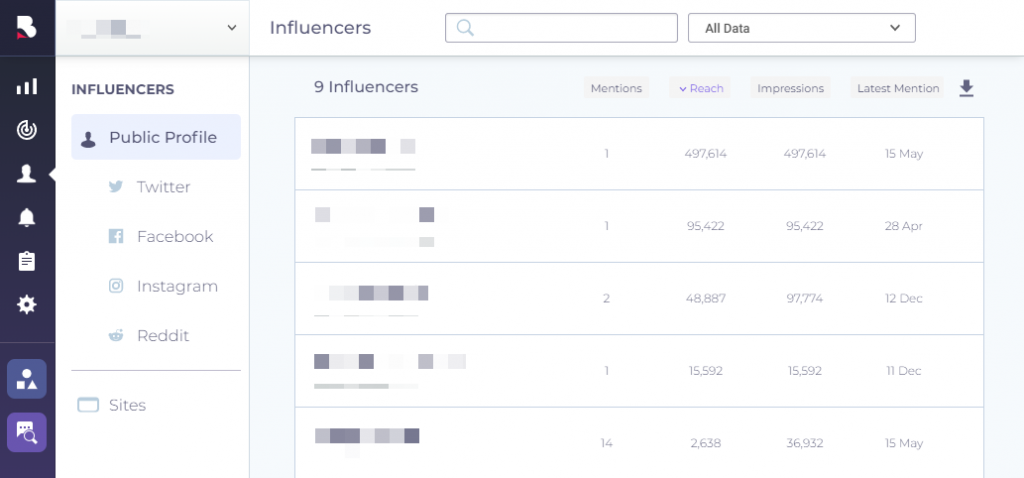
Then, engage with them and try to build relationships.
3.8. Monitor How Your Content Is Performing
You should make sure you’re able to track your progress if you want to know how successful your modifications were.
The Google Search Console is a great way of monitoring organic search traffic and positions.
However, the data there might sometimes be a little confusing and hard to filter.
You might also be interested in a third party tool, such as our Rank Tracker.
![]()
Moreover, not all traffic comes from Google, so you might also want a tool such as Google Analytics to monitor other traffic sources.
You can also try a tool such as Brand Mentions to monitor mentions about your brand and content on Social Media and the internet.
To precisely monitor the effectiveness of this OnPage SEO technique, make sure you don’t make any other major changes to the website.
3.9. Update Your Content Once in a While
Google loves fresh content. That’s why updating it from time to time should be part of your SEO content strategy.
Our method works really well for old content as well, so don’t just focus on new content.
We’ve improved many of our old blog posts using the Content Optimizer Tool.
In fact, we did it on a mass scale, with pretty good results.
Although some of the articles did lose a couple of rankings instead of gaining them, the overall process was a success, both in terms of rankings and traffic.
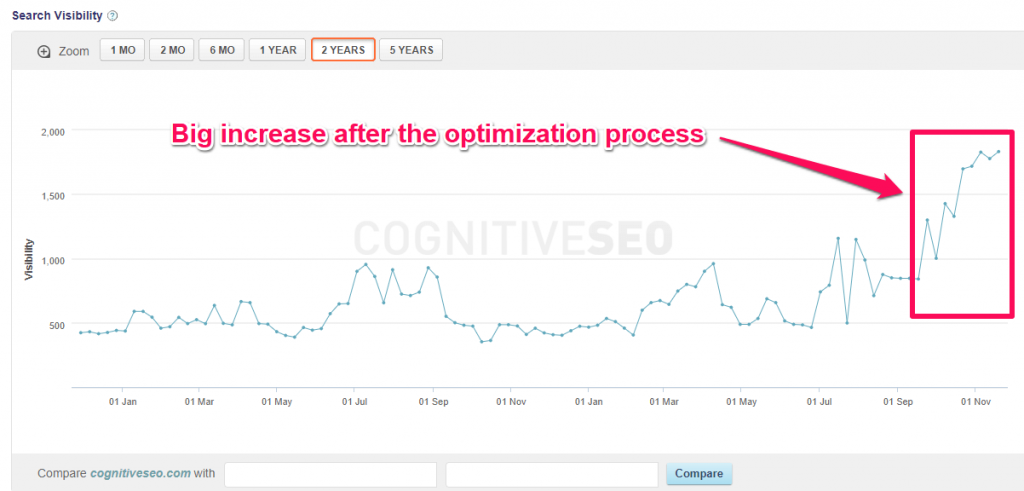
One of the articles we’ve constantly updated over the time is our Google Easter Eggs article, which is one of our top performing piece of content, although not directly related to SEO.
It’s a good idea to check the content’s score from time to time to see if it’s still in good shape.
The Content Performance score is relative. This means that as other articles improve, your score might drop over time.
However, even if the score is still really good, don’t try to trick Google by simply changing the date to make your content look fresh.
It’s best if you actually review the content and make a few improvements / modifications.
Conclusion
To get high ranks, the focus shouldn’t be on backlinks, but on a solid SEO content strategy. Get your content under the right people’s eyes, and you’ll see the links pouring in.
Applying this SEO content strategy can help you easily rank without going through the hassle of obtaining links. Attack the content creation and promotion from the right angle and backlinks will come naturally.
The truth is, you don’t need backlinks for every article. You just need a handful of articles that bring in the links to grow the authority of your domain.
Then you can use those links to pass that authority to all your articles, making it easier to rank everywhere.
So, let us know in the comments section below: Do you consider it’s possible to rank a page without any backlinks? Have you every managed to rank one on a decent search volume keyword? Do you know any content marketers at all able to rank websites on Google without backlinks? What other marketing strategy have you used to rank your content except building links?

